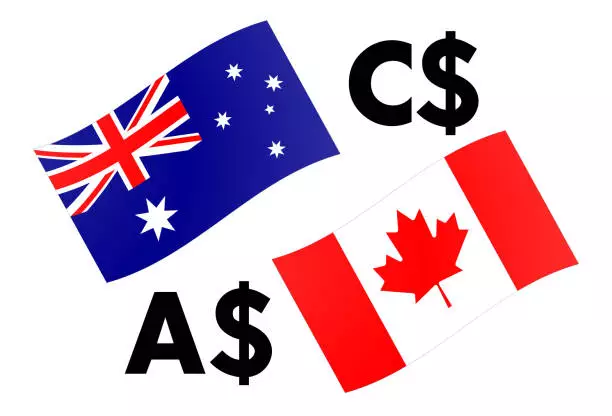The landscape of international trade is continually evolving, and the recent developments indicate a significant escalation known as Trade War 2.0. Unlike its predecessor, which primarily focused on US-China relations, this new phase has broader implications, involving several major trading partners, including Canada, Mexico, and potentially the European Union. The 25% tariffs imposed on Canadian and Mexican goods, alongside a 10% levy on Chinese products by US President Trump, indicate a strategic shift that could trigger widespread economic consequences, notably a rise in stagflation fears.
As tariffs mount, the potential for a “stagflation narrative,” characterized by stagnating economic growth and rising inflation, becomes particularly salient. Market participants are acutely aware of the speculative nature of these developments, as deteriorating global economic growth prospects send ripples through commodity markets and associated currencies, such as the Australian dollar (AUD) and the Canadian dollar (CAD).
The performance of commodity-linked currencies, such as the AUD and CAD, is heavily influenced by global economic health. A downturn in growth can lead to lower demand for base metals and crude oil, exacerbating the already tenuous situation for these economies. As trade tensions intensify, currencies that closely align with commodities are likely to experience significant volatility.
For instance, the AUD acts as a proxy for base metals like iron ore, while the CAD is often linked to oil prices. The ongoing uncertainty around Trade War 2.0 has already led to a cautious outlook. With traders keeping a close eye on pivotal resistance and support levels, the AUD/USD exchange rate offers critical insights into the market’s sentiment.
The AUD/USD pair recently faced stiff resistance at the 0.6330 level, a key medium-term point. This resistance can be attributed to the downward pressure exerted by the loss of momentum and bearish crossovers indicated by the daily MACD trend indicator. The paired currency struggled to gain traction following its recent low recorded on January 13, 2025. If the AUD continues to falter and moves below 0.6120, it may face further declines to support levels around 0.6030/5990 and ultimately 0.5870/5810.
Conversely, positive movement above the 0.6330 mark could invalidate the bearish claims, opening pathways to higher resistance levels. Such a shift would be critical for traders looking to position themselves favorably within the market’s complex and shifting dynamics.
The USD/CAD pair demonstrates a slightly different narrative. Recent price actions have shown a gap up and are currently testing a long-term range resistance at approximately 1.4690, a threshold that has not been breached since January 2016. The overbought conditions indicated by the daily Relative Strength Index (RSI) suggest that, while the pairing may experience minor corrections, the overall trend remains bullish.
However, should the USD/CAD drop below 1.4300, bearish sentiments could take hold, potentially leading to a downtrend that risks exposing additional support at 1.3890. Traders must remain vigilant, as the interplay between economic developments and technical indicators will dictate the future trajectory of these pairs.
As the world braces for the potential fallout from Trade War 2.0, the ramifications on global economic growth and commodity currencies cannot be understated. The specter of stagflation looms large, with financial markets awaiting confirmation of emerging trends.
Traders and investors should adopt a strategic approach, grounding their decisions in technical analysis while remaining keenly aware of macroeconomic shifts. The future of currencies like the AUD and CAD will largely depend on how effectively these nations navigate the uncertain waters of international trade amidst a potentially turbulent economic landscape. The convergence of geopolitical tensions and market dynamics will need careful monitoring as participants position themselves for what lies ahead in this new trade environment.

